In the previous aeticle we discussed the raising of pullets and broilers to be sold as meat. In this issue we look at natural and artificial brooding of eggs to be raised as layers.
Breeds of chicken
In the chapter on planning your poultry farming enterprise, we looked at the chicken breeds that are best for producing eggs. In short, hybrid chickens bred from indigenous breeds that are suitable for African conditions, such as Mike Bosch’s Boschveld chickens, are ideally suited as layers.
Raising layers
If you have never kept chickens, it is best to start small and learn what works well and what does not.\
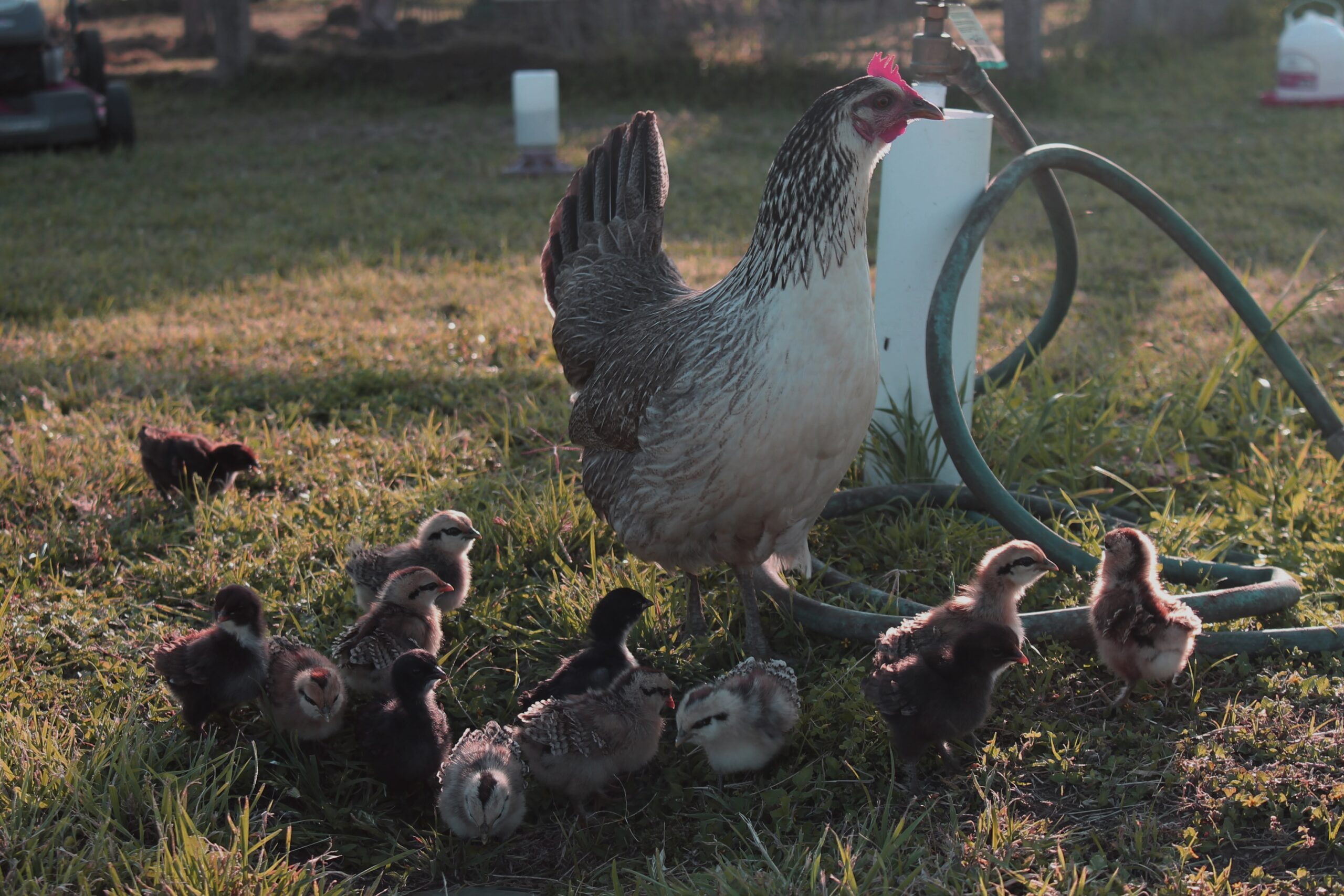
A mother hen keeps an eye out for predators. (Source: Joseph Cortez, unsplash.com)
There are two ways to get chickens to be raised as broilers or layers. You can buy day-old chickens and raise them in a brooder until they are three weeks old, like we discussed in chapter 4. Then you can raise the pullets until they are 18 weeks old and almost ready to start laying eggs, as we discussed in Chapter 5 (1).
If you want to save time, you can buy point-of-lay hens that are 18 weeks old and will start laying in two weeks’ time. Although they are more expensive, you will save money on feed for 18 weeks, and they will have had their important inoculations.
Natural incubation
If you want to gain some experience with chickens before you go commercial, you can start with eight hens and a cockerel. These hens need to sleep inside a safe henhouse where there are perches for them to sleep on and nest boxes in which to lay their eggs.
A broody hen that is chosen for natural incubation should be large so that her body can cover about 16 eggs. She must be preferably vaccinated, healthy, and free of external parasites.
A hen is broody when she stops laying and remains sitting on her eggs. She becomes quite fierce and will peck at you when you come too close to her nest. She ruffles her feathers and spreads her wings protectively and will cluck quite loudly.
The nest must be in a suitable container in a secluded spot. Put a layer of about 2 cm of sand in the container and top it with about 3 cm of dry nesting material to create a snug nest.
Put food and water close to the nest so the hen doesn’t have to leave the nest to look for food. She needs to sit on the eggs almost constantly to keep them at a constant temperature of 39,5 Celsius. If the eggs get cold, it hampers the development of the embryos. The eggs must also be kept moist. The hen splashes the eggs with water from her beak to keep them moist and cool. To help keeping the humidity right in hot, dry areas, slightly damp soil can be put underneath the nest. This will keep the moisture levels constant to prevent the contents of the eggs from drying out through the porous shell.
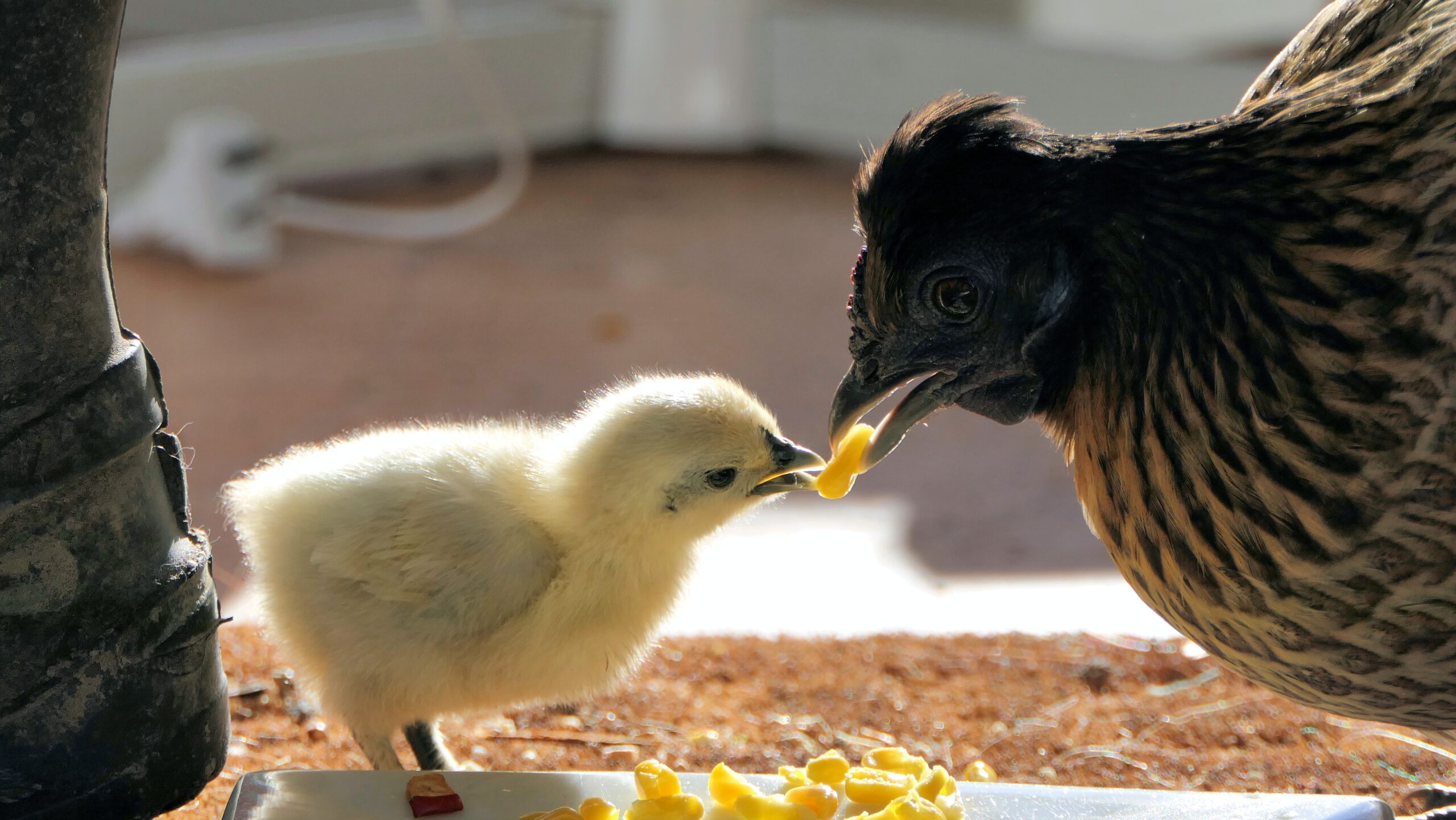
A mother hen teachers her chicks what food to eat. (Source: Andrea Lightfoot, unsplash.com)
As the embryo develops, it generates more heat, and the soil underneath the nest will also help cool them down.
Eggs are usually fertile about four days after the rooster has been with the hens. You can check whether they are fertile by holding them up to a candle flame. If there is a dark spot, the egg is fertile. Remove infertile eggs and replace them with fertile eggs from one of the other hens, but it is best to do so at dusk so as not to upset the broody hen.
Eggs stored for incubation must be kept at a temperature of between 12 and 14 Celsius, and the humidity must be quite high (80%). The eggs must not be stored longer than seven days.
The eggs will hatch in 20 to 21 days. Half of the chicks will be female, but you will only be able to find out which ones once they start growing feathers. The male chicks can also be raised as broilers, but they grow slower than the females. On the other hand, you can feed them less expensive feed than you would the females.
The hen and her chicks must be kept away from the others until the chicks are about five weeks old.
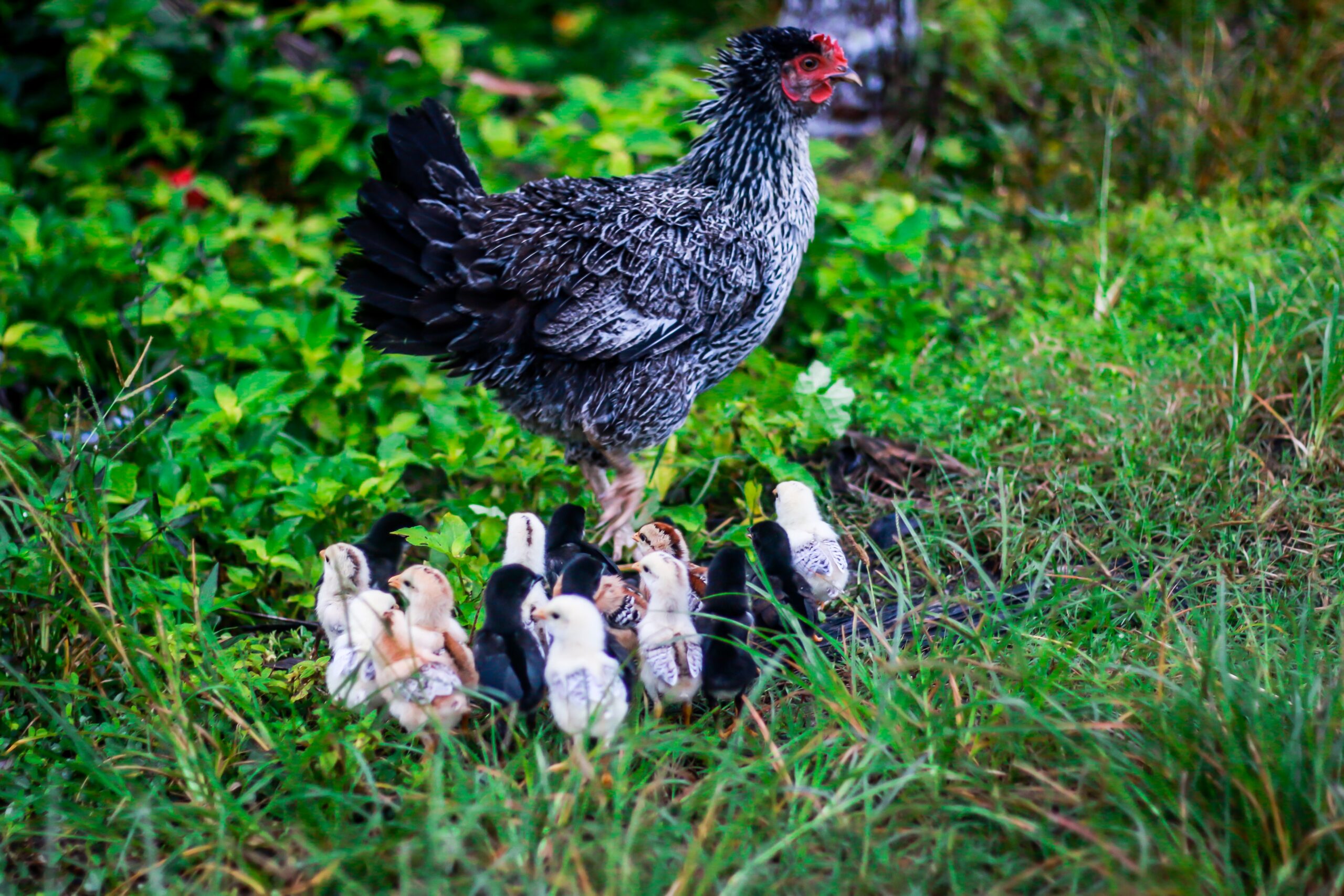
A hen and her chicks forage in the
garden. (Source: Kannan, unsplash.
com)
Artificial incubation
You can also hatch chicks in an artificial incubator, but for that you will need a reliable supply of heat and thermostats to keep the heat constant.
There are many artificial incubators available commercially, but these are mostly costly. You can make your own artificial incubation box for hatching fifty to hundred chickens.
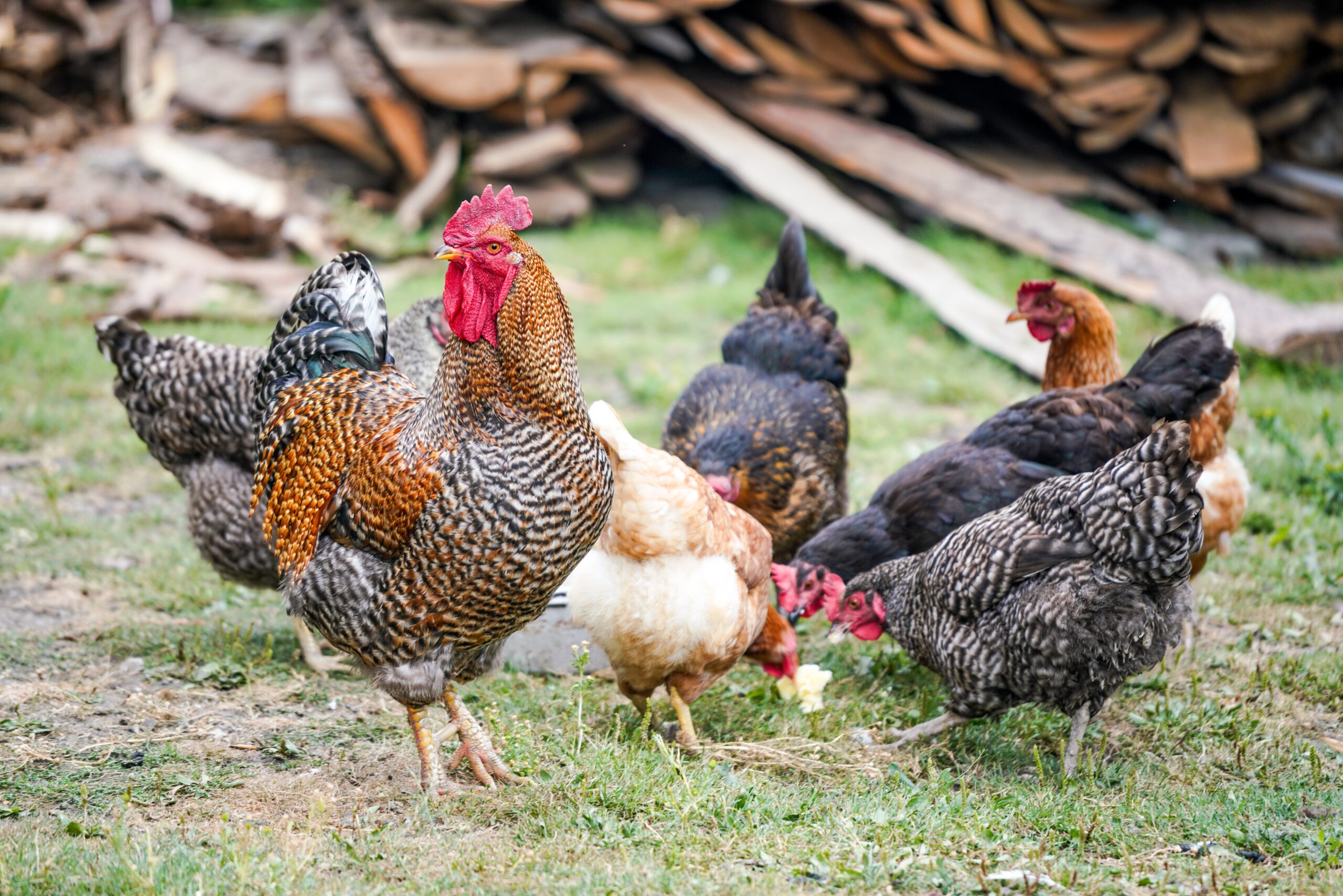
Eight hens and a cockerel are a
good-sized flock for limited chicken
farming. (Source: Zosia Korscz, unsplash.com)
Here are some things to consider:
A broody hen instinctively takes care of the eggs in her nest, but to artificially incubate a batch of eggs, you will have
to be a mother hen for three weeks. You need to control the temperature in the incubation box at a constant temperature of 39,5° Celsius. This can be done by means of two electrical light bulbs or coils that are connected to the thermostat. You can also use a gas heater or a kerosene lamp that is normally used for lighting purposes. Make sure you don’t run out of kerosene, as the eggs must not get cold!
The incubator must be well ventilated to keep the warm air moving through the box.
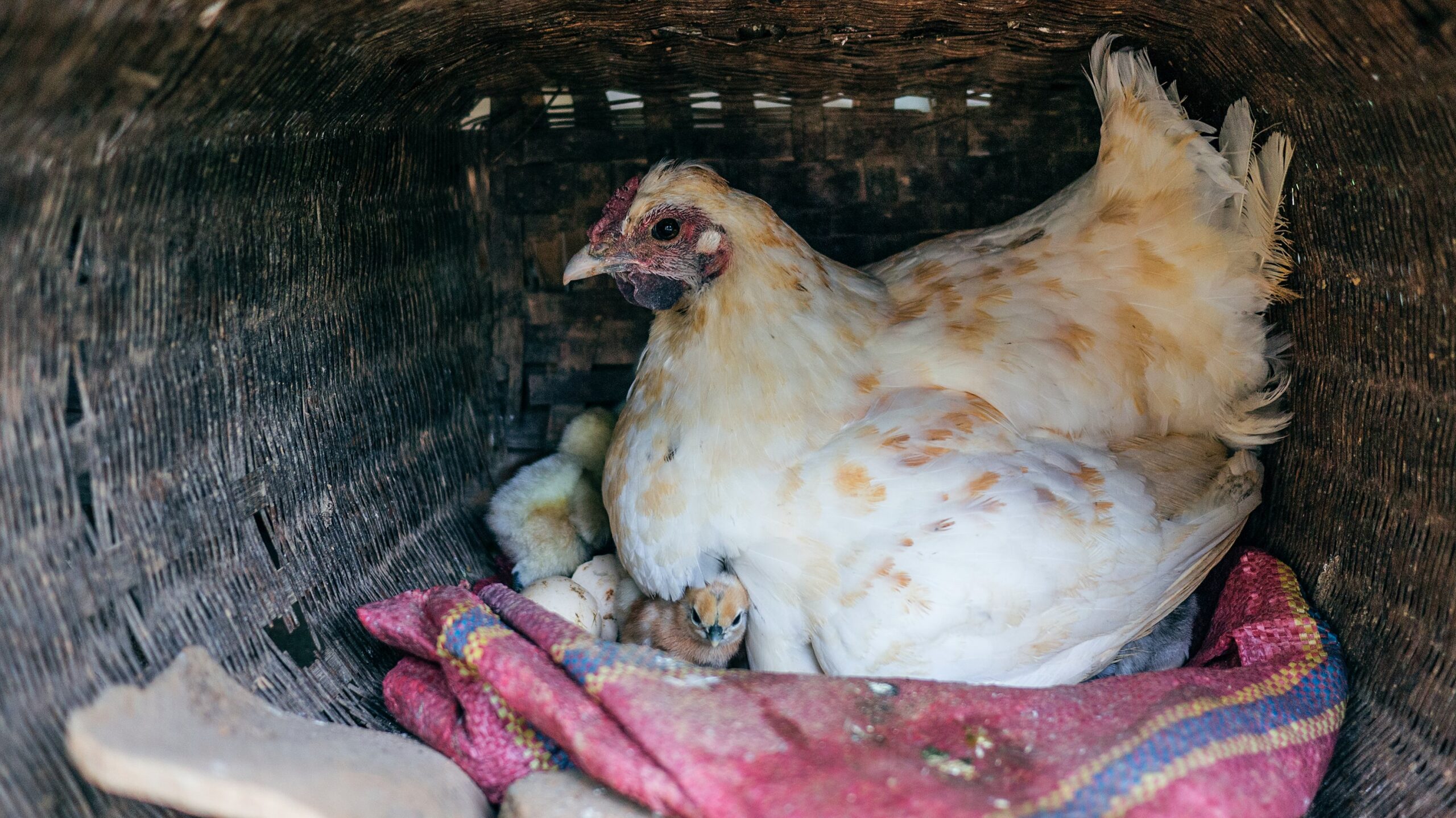
Any suitable container can be used as a nest. (Source: Phoenix Han, unsplash.com)
You can regulate the humidity at 50% by placing a tray of water on the floor of the incubator.
The eggs must be turned five to seven times a day to keep the embryo from sticking to the shell membrane. Mark the eggs on one end to ensure you turn all of them.
They must not be rotated end to end, but little by little to ensure a complete turn is achieved each day. As with natural incubation, the eggs will hatch after twenty to twenty-one days.
References
Boschveld Free-range Chickens. (n.d.) Boschveld.co.za http://boschveld.co.za/
Cilliers, P.F. (July 2000) Smallscale poultry housing in South Africa. ARC-Institute for Agricultural Engineering.
Cilliers, F. (Project manager) (2001) Small-scale broiler house (combined). ARC-Institute for Agricultural Engineering. Family poultry training course trainee’s manual. http://www.sapoultry.co.za/pdf-training/trainers-manual-poultry-course.pdf
Lesley, C. (2020) The complete life cycle of a chicken explained. Chickens and more https://www.chickensandmore.com/life-cycle-of-a-chicken/
Sonaiya, E. B., Swan, S. E. J. (2014) Small-scale poultry production Technical Guide. Chapter 5: Incubation and hatching. Food and Agriculture Organization of the United Nations. ISBN 92-5-105082-1 ISSN 1810-1119
https://www.fao.org/3/y5169e/y5169e06.htm

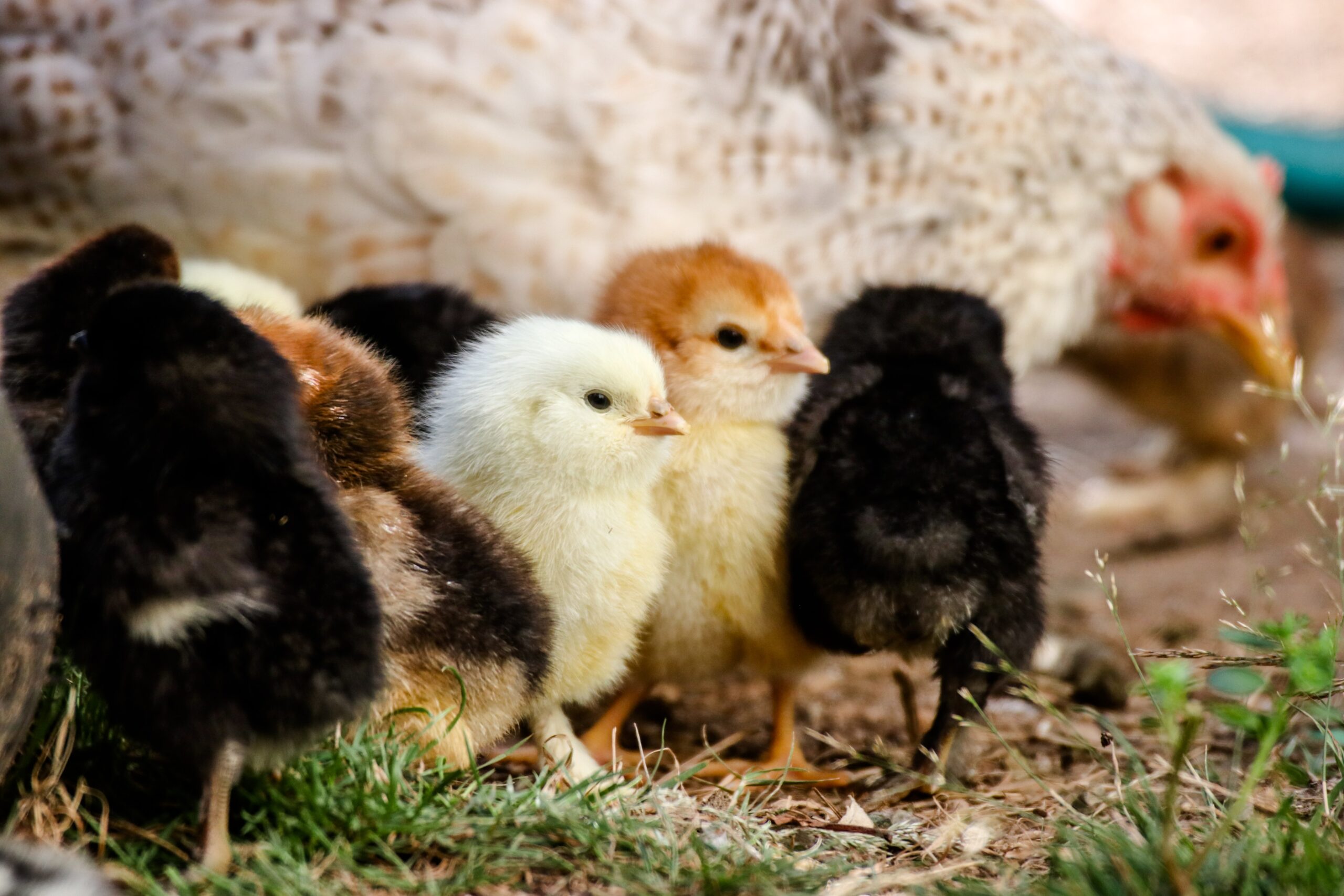








I found “Poultry farming Part 5.2: Natural and artificial incubation” a particularly informative article that discussed the advantages and disadvantages of natural and artificial incubation. The author highlighted the importance of temperature and humidity during incubation as well as the need for proper ventilation. The article also emphasized the benefits of investing in good quality eggs for successful hatching. Overall, a great resource for anyone interested in poultry farming and wanting to learn more about incubation methods.